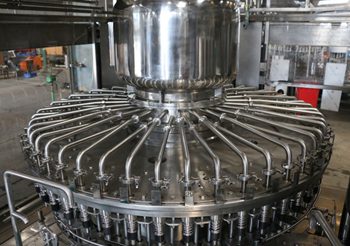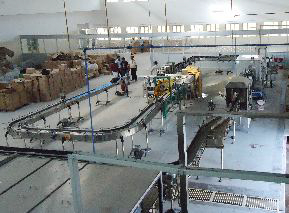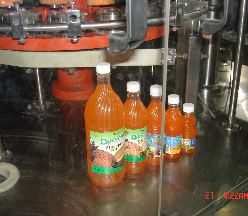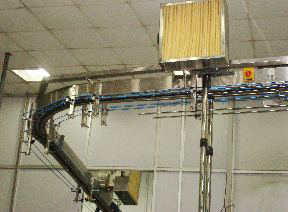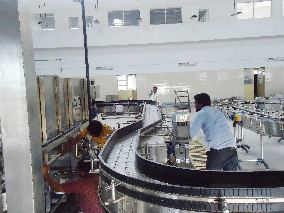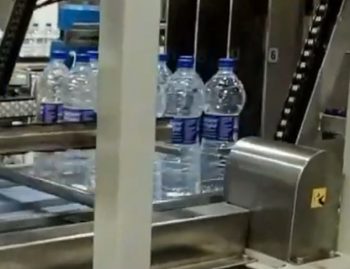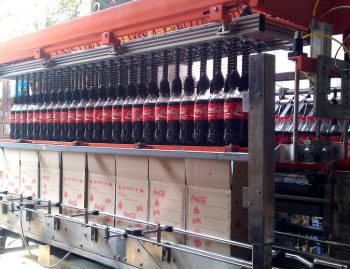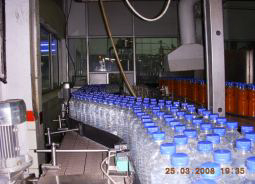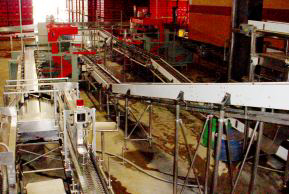
Basic Types of Conveyor Belts : Are you considering purchasing a conveyor belt for your assembly line? It's critical to select a conveyor that best meets your company's requirements. If you want to make an informed decision, you should understand the fundamental types of conveyors and how to fit them to your business needs. The correct belt can also help you enhance profit margins, streamline your assembly line, and contribute to company growth in unexpected ways. To get you started, here's an overview of the most common conveyor belt kinds and their uses.
Basic Types of Conveyor Belts
- Roller Bed Conveyor Belts
The surface of this sort of conveyor belt, as the name implies, is made up of rollers that are chosen to match production requirements, such as the weight or needed speed of the products that will travel along the belt. This type of conveyor belt has fewer rollers and might be made up of just two. However, as the distance between the two ends of the belt grows longer, more will be required for it to function properly. When things are put onto the belt by gravity, a roller bed configuration is ideal. This is because manual loading can harm the rollers due to mechanical shock. Roller bed conveyor belts are also a suitable choice for delivering objects over long distances since they reduce friction and allow products to travel more easily along the belt.
Read More : Working Principle And Types Of Screw Conveyor
- Flat Belt Conveyors
One of the most common conveyor systems in use today is the flat belt conveyor belt. Internal conveyance, or transferring objects within a facility, is made easier using flat belts. This type of conveyor belt moves a continuous flat belt made of natural or synthetic fabric via a succession of powered pulleys (ex. polyester, nylon).
Items are carried from one end to the other on top of the moving belt. This type of conveyor belt is extremely adaptable because its belts can be made of a variety of materials. Center drives and nose bars are optional components that can be included depending on the needs of the application.
- Modular Belt Conveyors
While flat belt conveyors use a single, continuous loop of material, modular conveyor belt systems use a single loop made up of thousands of interlocked components, most of which are composed of hard plastic. Rather than having to trash the entire belt, these segments can be removed and replaced individually.
They're also easy to clean and more resistant to abrasive and sharp objects. Modular belt conveyors are therefore easier to maintain and replace than flat belt conveyors. Modular belt conveyors are ideal for applications that require them to traverse around bends. In fact, they may move straight, around a bend, even slope and drop all while using the same belt and motor.
Other types of conveyors can technically do the same thing, but only with a lot of customization and extra expenditures. Plastic modular belts also enable unique conveyor designs while maintaining belt tracking. A belt having a wider breadth than its length, for example, can offer the support needed to handle soft plastic bags, cardboard boxes, and shrink-wrapped goods.
- Curved Belt Conveyors
A curved frame is used in this sort of belt conveyor to carry products around corners, conduct tight transfers, or utilize available floor space. The curvature on these belts can reach 180 degrees. Because modular plastic belts require straight runs before and after bends, true curved conveyors with no straight runs may only employ flat belts. Curved belt conveyors are frequently used in bag handling systems to shift the direction of objects being conveyed.
- Incline/Decline Belt Conveyors
Incline belt conveyors have a single or double nose take-up, a center drive, and a gear motor. Instead of a smooth-surfaced belt, this type of conveyor features a rough-surfaced belt, which is great for transporting things up and down.
These systems can be used in conjunction with cleated belt conveyors to deliver products to various heights while preventing them from slipping off the line. These conveyor belts can be used to boost gravity flow systems in addition to transferring goods between levels.
